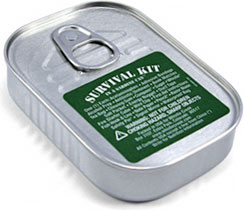Hair Transplant Failures and Survival Rates
 An article written by Dr. Michael Beehner in the most recent issue of the Hair Transplant Forum (print newsletter published by the ISHRS) discussed survival of hairs in a hair transplant. He had done a study where he created five 1cm square boxes of grafts on a human volunteer just in front of the crown of the head. He separated grafts into each box focusing upon how the grafts were harvested and trimmed. One and two-hair grafts were studied. The tests followed the growth as long as 19 months. He showed that one-hair grafts which were trimmed very close and skeletonized had a 48% survival after 19 months. It was also shown in other publications, that grafts that are allowed to dry when out of the body also fail to grow. Grafts are out of the body when they are put into recipient sites, so the skill and experience of the staff clearly relates to the end results one expects to see.
An article written by Dr. Michael Beehner in the most recent issue of the Hair Transplant Forum (print newsletter published by the ISHRS) discussed survival of hairs in a hair transplant. He had done a study where he created five 1cm square boxes of grafts on a human volunteer just in front of the crown of the head. He separated grafts into each box focusing upon how the grafts were harvested and trimmed. One and two-hair grafts were studied. The tests followed the growth as long as 19 months. He showed that one-hair grafts which were trimmed very close and skeletonized had a 48% survival after 19 months. It was also shown in other publications, that grafts that are allowed to dry when out of the body also fail to grow. Grafts are out of the body when they are put into recipient sites, so the skill and experience of the staff clearly relates to the end results one expects to see.
Of interest, he noted that there was a significant increase in hair growth between the 14th and the 19th month of the study, reaffirming my own view that the transplant results get better over time. Doctors who create “chubby” grafts and leave the sebaceous gland with the grafts and a good fatty cover to the hair shafts, get growth in the 98% range at 19 months (up from 66% at 14 months), according to the study. Chubby grafts will also leave behind telogen hairs within the grafts that in some previous studies reported hair growth that exceeded 100%. There is a clear difference between the number of hairs that survive the transplant and the number of graft that are transplanted (as each graft can have more than one hair).
Lately, quite a number of our readers have written me about poor growth from their hair transplants and we’ve posted quite a few of those here. I have always directed these people back to their doctors and suggested that if they do not get the answers they want and need, they should get a second opinion. The main bit I hope you learn from this is that there’s really no substitute for a team consisting of a knowledgeable surgeon and an experienced, skilled staff. You don’t want to have your time, money, and available donor grafts wasted by a surgeon or his/her clinical team.

Reader Comments0
Share this entry
Leave a Comment
Want to join the discussion? Feel free to contribute! Note: We do not tolerate offensive language or personal attacks to other readers. Marketing links or commercial advertisements will be deleted.